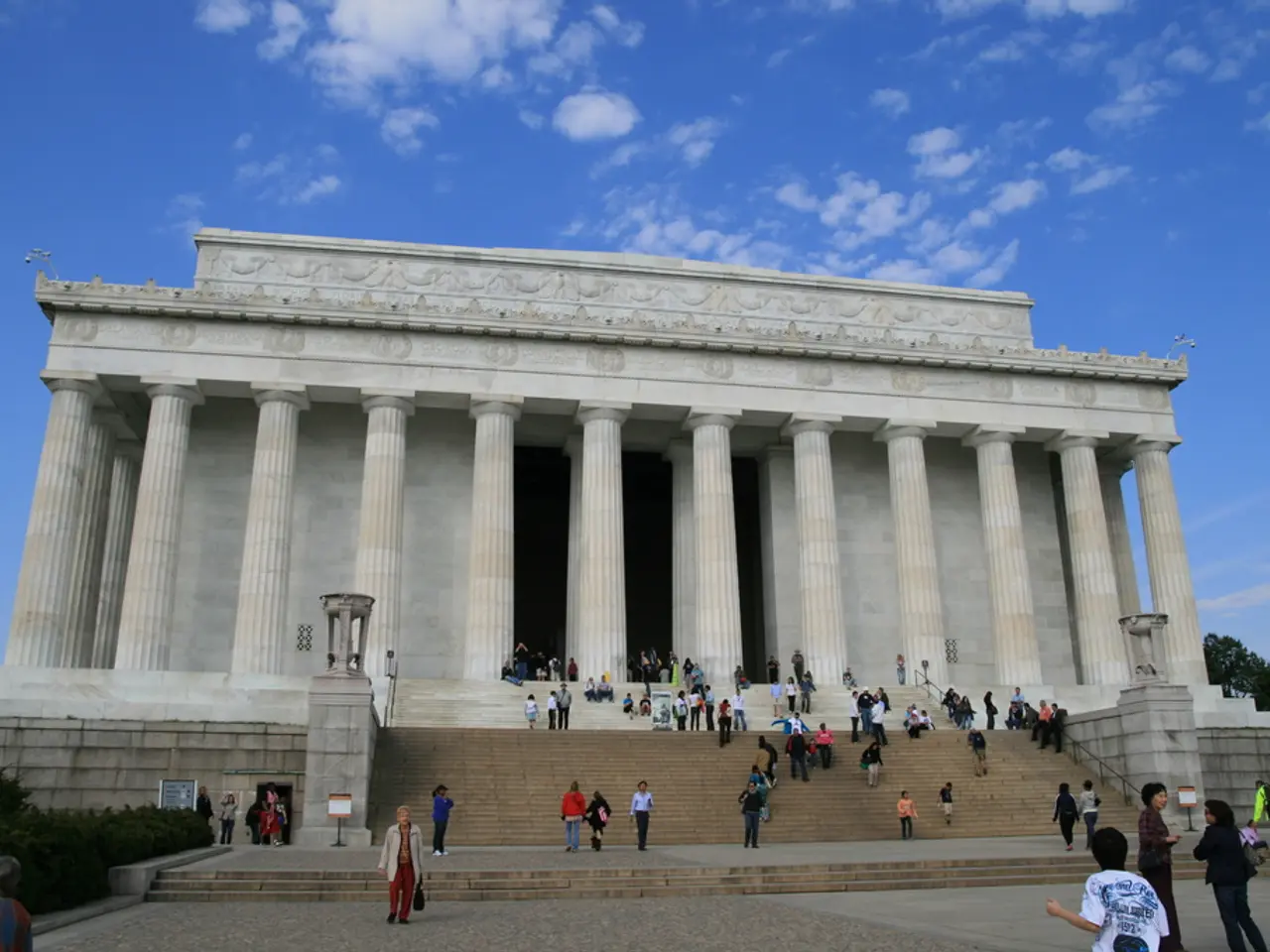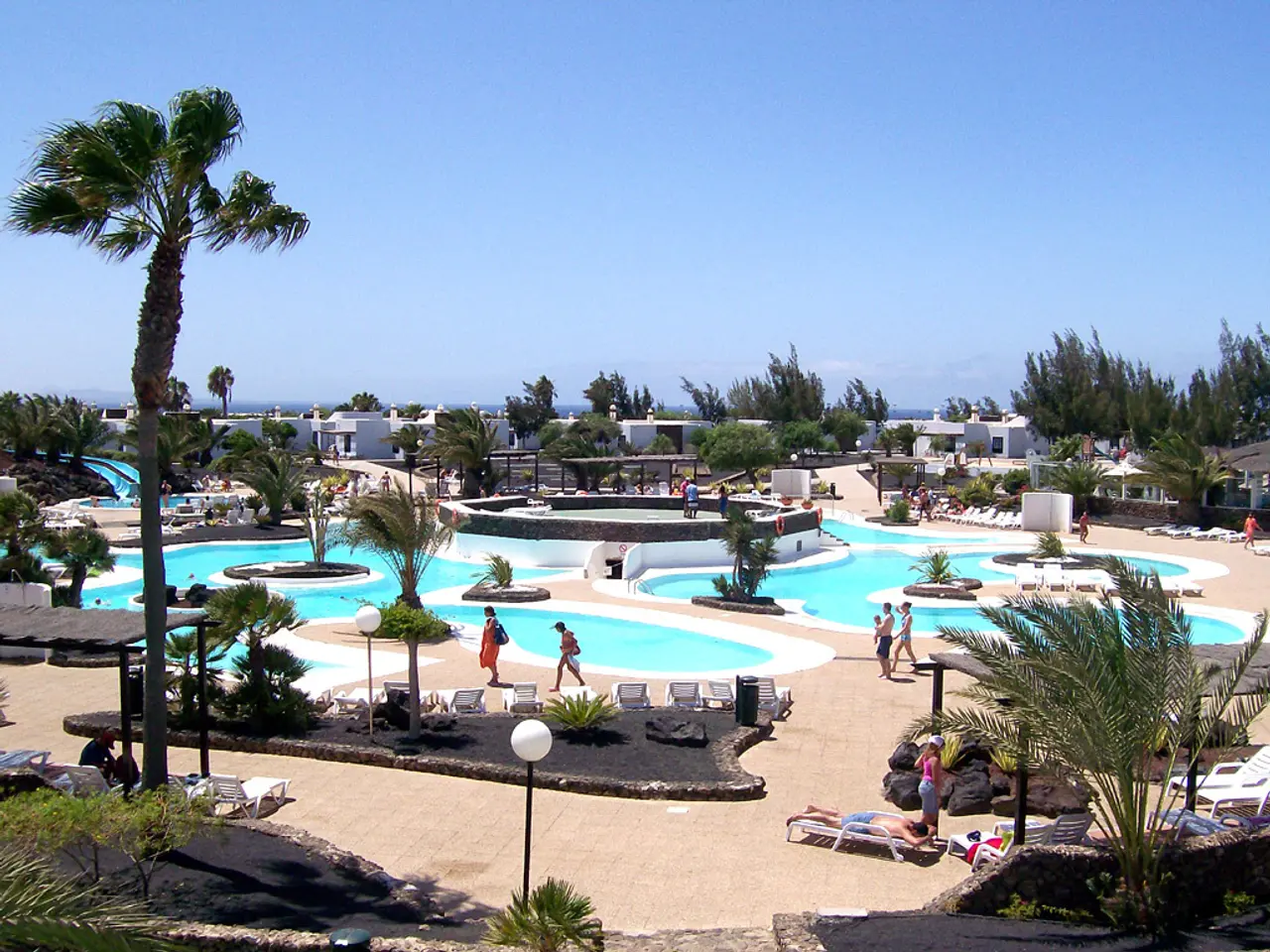Excursion to Carrara: Exploring the Region Where the Tuscan Mountains Transform into Marble
**Discovering Carrara: A Journey Through Marble, History, and Modernity**
Nestled at the northern edge of Tuscany, beneath the majestic Apuan Alps and near the Ligurian Sea, lies the enchanting town of Carrara. With geographical coordinates of approximately 44.0793° N latitude and 10.0977° E longitude, this picturesque town is a hidden gem waiting to be explored.
**Getting to Carrara**
Reaching Carrara is an easy endeavour. From Pisa, it takes approximately 50 minutes by car, or you can take a train to Carrara-Avenza station and then a short bus or taxi ride into the town centre. If you're coming from Cinque Terre or La Spezia, the journey takes about an hour by car, or you can take the train to Carrara-Avenza and then local transport.
**The Heart of Marble**
Carrara is renowned for its white marble, a material that has graced the works of great artists such as Michelangelo. The Duomo in Carrara showcases this long-standing relationship, using marble as a sacred material in its interior design. The town's squares have been transformed into open-air sculpture parks, with contemporary sculptures adorning the spaces.
**Exploring Carrara**
A suggested itinerary for a day trip to Carrara includes visiting Piazza Alberica, the Duomo di Sant'Andrea, Castello Malaspina, and outdoor sculptures. Don't forget to stop by a local artisan marble workshop and the Fantiscritti marble quarries.
Castello Malaspina, with its red crenellations and stone facade, towers over the city. Its bougainvillea-covered exterior and guardian lions add a touch of medieval charm. A sculpture of a figure holding an urn or lyre in front of Castello Malaspina symbolizes Carrara's dual personality: strength and serenity, art and architecture.
Piazza Alberica features marble sculptures as part of daily life, with barriers and benches also being carved from marble. Here, you'll find a striking abstract elephant standing proudly, embodying playful elegance. In Piazza del Duomo, a modern cactus growing from a thick slab of marble bridges sacred architecture and contemporary expression, symbolizing Carrara's identity.
**A Taste of Carrara**
Lunchtime in Carrara offers a chance to try a local delicacy, Lardo di Colonnata, which is aged in marble tubs. For a souvenir, consider purchasing a small marble souvenir, such as coasters, hearts, or mini sculptures, from artisan shops.
**Exploring Beyond the Centre**
If you're visiting Carrara in the summer, aim for morning or late afternoon to avoid the heat in the marble squares. The colorful backstreets of Carrara are quiet, alive with locals, and untouched by mass tourism, offering a unique glimpse into the town's authentic character.
Image 8 shows an unfinished raw block of marble topped with a surreal reclining figure, representing art in progress. Image 9 features a futuristic white sculpture of twisted loops and elegant geometry contrasting with Carrara's baroque buildings. Image 10 showcases a smooth sculpted marble head, minimalist and poetic, located in the heart of the city.
**A Tangible Connection to the Past**
Castello Malaspina offers sweeping views and a tangible connection to Carrara's medieval and Renaissance past. The fortress, with its red crenellations and stone facade, is guarded by lions and covered in bougainvillea.
In conclusion, Carrara is not just a side attraction but a destination in its own right, offering a unique blend of ancient stone and modern spirit. Whether you're a history buff, an art lover, or a food enthusiast, Carrara promises an unforgettable experience.
- Explore the home-and-garden of Carrara town, where its squares have been transformed into open-air sculpture parks, showcasing contemporary art amidst historic buildings.
- After a day of discovering Carrara's marble history and modernity, elevate your lifestyle with a taste of its local delicacy, Lardo di Colonnata, and take home a small marble souvenir as a reminder of your travel to this hidden gem.




